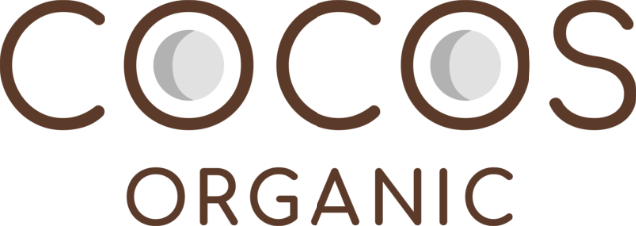In the UK alone, it’s estimated that over two thirds of the population are deficient in nutrients, vitamins and minerals that are required by the body for basic functions. Without these nutrients and minerals our organs and cells just won’t be able to do their jobs correctly which leads to sickness and poor health. Macro and micronutrients cannot be produced by the body alone, and therefore we must ensure we get them into our body through outside sources such as through whole foods.
However, the Western diet and the reduction of nutrient dense foods due to poor quality soil and large-scale production of animal protein as well as the increase in consumption of processed food has led to the reduction of nutrients absorbed by the average person…this is where the debate for fortification comes in. We spoke to Nutritional Therapist Eleanor Hoath to see if she could shed some light on this confusing topic…
What is fortification?
To put it simply – fortification is the process of adding micronutrients to certain food, this can be carried out by food manufacturers, or by governments as a public health policy which aims to reduce the number of people with dietary deficiencies within a population. In the past we have seen new policies introduced that have led to milks, yoghurts, breads, drinks, and cereals fortified with lab-made variations of nutrients that are missing from our diets. This idea was first introduced in the 1930’s where foods such as milk were fortified with Vitamin D and fruit drinks fortified with calcium. This was shortly followed by baked goods such as flour fortified with folic acid, riboflavin, and iron to restore nutrients in the body to a ‘healthy’ level. Seems like a perfect solution. Well – Eleanor says it’s not clear cut.
Is fortification good for me?
Adding nutritional value to foods is a win. Especially when we are fulfilling a need that is not currently being met if they aren’t consuming animal protein, dairy or a healthy number of fruits and vegetables. Similarly, from a cost perspective – fortified products often tend to be cheaper as they contain a synthetic version of the nutrient.
In addition, research shows the promising decline of diseases such as rickets thanks to the fortification of Vitamin D in products reducing deficiency in children.
What are the issues with fortification?
Although fortification of foods has been introduced with the public’s health best interests, it is also important to recognise the limitations and potential consequences that can come with fortification.
Foods that tend to be fortified are considered overly ‘processed’ and less nutrient dense than whole foods. White breads, pasta, milks, and chocolatey cereals that are normally considered ‘unhealthy’ are marketed and identified as a ‘a source of vitamin D’. Just because a food product has been labelled and fortified in production, doesn’t equal a healthy nor nutritious food. On the contrary, it most likely is highly processed and high in sugars, fats, and additional ingredients. Opting for a fortified product because we automatically see it as the ‘healthier’ option may therefore be hindering your health rather than the reverse.
Risk of overdose
The thought of ‘overdosing’ on vitamins and minerals almost seems absurd – but it’s possible, but only in those that are of an artificial source. When you get nutrients and vitamins from whole sources, your body knows how to process and can eliminate any excess naturally. However, this isn’t the case with synthetic vitamins…therefore people who often take a multi-vitamin and eat meat sometimes see their urine go bright yellow, those excess B Vitamins are yellow in colour! This is predominantly a concern with vitamin and mineral supplementation rather than consuming nutrients through good quality foods. For example, in pregnancy and in older women there is a risk of excess Vitamin A which can cause birth defects (1), and high levels of vitamin A have been linked to hip fractures in older adults (2).
Quality and Quantity
Quality and quantity are equally as important when it comes to fortification – products can claim to be ‘fortified’ with vitamins, but they do not provide adequate information on who it is fortified for (remember we all require different amounts at different ages) nor do they explain how it will be absorbed by the body. Cheap and synthetic micronutrients are not readily absorbed by the body – in fact they can often add additional stress to the body as the digestive system cannot break down these ingredients or put them to good use. In addition, the sprinkling of nutrients into products during mass production also comes with limitations – are the nutrients dispersed throughout the product effectively? Fortified plant milks that have been tested found the minerals and nutrients sink to the bottom, so those not shaking adequately will not receive the full amount of nutrients in every serving.
But what about Calcium?
As a dairy-free brand, we often receive messages and requests to fortify our products with calcium – with many customers concerned that they will be deficient in the nutrient. As an organic brand, we cannot fortify our products with synthetic vitamins without losing our organic status. We all know that calcium is vital for strong bones and helps reduce the risks of fractures and osteoporosis in adults. From a young age we were told a glass of milk before bed was best to keep our bones strong. However, we don’t have to rely solely on dairy to strengthen our bones…in fact countries with the lowest milk consumption have the lowest rates of osteoporosis.
Calcium levels can also very easily be tipped into excess says Hoath, with there being a fine line between healthy levels crossing into overconsumption. Population studies have shown that excessive calcium intake, predominantly exceeding 2500 mg per day of synthetic or artificial calcium sources, can increase the risk of hypercalcemia (a condition in which there is a high level of calcium in the body), poor kidney health including kidney stones, among other things. Similarly, the risk of cardiovascular events and prostate cancer has also been found to be more prevalent in certain populations (4). This supports the argument that the amount of calcium needed by the average person can be found in whole foods sources…there are plenty of ways to get your daily allowance of 1,000mg of calcium from plant-based foods. In fact, here are some amazing sources that come without added hormones that come with dairy.
– Sesame seeds (4 tbsp: 351 milligrams)
– Tofu (100g: 350 milligrams)
– Spring greens (190g: 268 milligrams)
– Spinach (180g cooked: 245 milligrams)
– Swiss chard (180g cooked: 102 milligrams)
– Almonds (55g: 150 milligrams)
– Kale (130g: 93 milligrams)
In addition, there is new evidence that’s vitamin D, not calcium that strengthens our bones (5).
So, what should I buy?
It’s clear that there is a good argument for the use for supplemented minerals and vitamins when they come from a high quality and readily absorbed source, especially when the healthy amount is not being reached through diet alone. That being said Eleanor Hoath concludes you have to be aware of the limitations and grey area when it comes to this issue. You cannot counteract a poor diet through supplementation Hoath comments, just because a chocolate cake is made with ‘fortified flour’ doesn’t make it healthier. When looking for fortified products you should always consider the source of the nutrients and vitamins, and how easily they will be absorbed by the body. Ideally, we should opt for whole, plant foods in the diet where possible to create well rounded meals that support overall health and nutrient levels.
https://www.wellnourished.me
https://www.instagram.com/wellnourished_nutrition/

